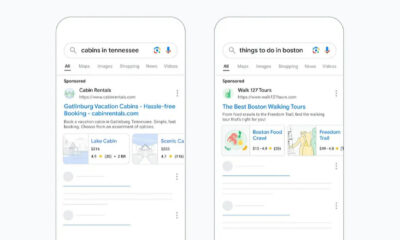MARKETING
The Ultimate Guide for Creating Diversity-Friendly Ads


Introduction
We live in the most diverse and multicultural times in the history of the world. Technology has helped people migrate from different countries with much more ease than ever before. In the United States alone, it is estimated that by 2044 the sum population of all minorities will surpass the population of white Americans.
Any savvy businessman or marketer knows that this means their brand needs to adapt fast or be prepared to get left behind.
We hope, with this article, to help your business transition its online advertising into a more diversified one.
Diversity in Ad Campaigns is a No-brainer
Diversity in Population is Growing Fast
According to Maryville University, current data shows that growth among racial and ethnic minority groups is outpacing that of Caucasians, indicating that America is becoming more diverse.
According to the U.S. Census Bureau in 2020, nearly four out of every ten Americans identify as belonging to a racial or ethnic group other than white, implying that the white population will have decreased for the first time in the country’s history during the 2010-2020 decade. Furthermore, another U.S. Census Bureau mentions that more than half of Americans will belong to minority groups by 2044.
Minority Consumers Relate With Brands That Understand Them
In a recent survey held among American Muslim consumers, 400 out of 400 respondents reacted to the statement “(a) I am a Muslim and (b) my choice of a brand or product is influenced by how Muslim-friendly it is”, with a “yes” for both “(a)” and “(b)”. Furthermore, in another survey, “Up to 83% of people pointed to better representing modern society as the reason marketing campaigns were impactful in a positive way”. Also, 70% of Gen Z consumers trust brands that show diversity in their advertisements.
Businesses have no choice but to update their promotional assets from a marketing standpoint. Since advertisements are at the forefront of brand efforts, diversity must be represented correctly in ad material. The only way for brands to remain relatable is to provide diverse content for diverse audiences in a way that accurately represents modern society.


The Industry’s Most Comprehensive Paid Traffic Certification For The Post-Privacy World
Overcome iOS updates, crumbling campaigns, and surging ad costs by mastering the most cutting-edge media buying strategies from the top traffic experts in the game today.
Diversity in Marketing Creates Significant New Revenue Streams
Entering new markets makes it easier to generate new revenue. More diversity and inclusion contribute to a more cohesive society and allow businesses to target new markets and increase response rates with relatable content, benefiting their bottom lines.
According to Heat, a Deloitte-owned research firm, brands with the most representative advertisements saw an average stock gain of 44% during the seven-quarter period that ended in 2018. Consumers preferred brands with the highest diversity ratings by an 83% margin.
Meanwhile, Microsoft Advertising has shown that more inclusive ads have seen 23% more “purchase intent” from Gen Z consumers. Alongside this, 64% of consumers, in a Think With Google poll, said they took action after seeing an advertisement they thought was inclusive or diverse.
How to Add Diversity and Inclusion to Your Marketing
In a very detailed article by Muslim Ad Network, you can read the step-by-step process of creating diversity and inclusion in your marketing campaign. We mention that it all starts with your internal environment: your team, your business culture, and your mentality. Before we go specifically into diversity in your ads, let’s look at some highlights from this article.
Adapting Your Message to the Market
For effective diversity marketing, you must adapt the message to the market rather than adapt the market to the message. So, if you want to communicate with minority consumers, make sure your message does not contradict their values.
Your inclusion marketing campaign must begin with a consideration of the multicultural context. You will need to research not only purchasing habits, but also values, ideals, perceptions, and communication methods.
The Right Knowledge and Combination of People in Your Team
Although your marketing team may not require members from every minority group, you should actively recruit talent from diverse backgrounds or work with external consultants and agencies.
If your marketing team is made up of like-minded individuals who decide that an ad campaign looks good to them without consulting members of the minority group you are targeting, your company is making a big mistake.
Even having members of a minority group on your marketing team may not be sufficient. Aside from soccer rivalries, Latin America, for example, is full of complex relationships. Consider Puerto Rico and the Dominican Republic. They compete over who makes the best plantain. Imagine making a campaign for Hispanics in general and then mentioning how Dominican plantains are the best in the world.
Connecting to minority consumer groups in real life will also help you gain more knowledge of their preferences. Even more importantly, your brand will gain a reputation and establish connections between your business and community leaders.
Diversity and Inclusion Marketing Audit
For the best results, you must audit your entire marketing infrastructure to see if there are sufficient elements of diversity and inclusion pertaining to:
- Marketing teams
- Marketing reach
- Website images and language
- Representation in collateral
- Decision-making processes
- Content approval
- Audience research
- Learnings from previous research
- Processes of challenging stereotypes
- The relatability of stories
- Working with communities
- Working with influencers
How to Create Diversity-Friendly Ads
Once you’ve optimized as much of your marketing infrastructure as possible for diversity and inclusion, you can begin creating ads that reflect this. Let us now look at how to create ads that promote diversity:
What Your Ads Must Avoid at All Costs
UNICEF Report
The information below is based on UNICEF’s Promoting diversity and inclusion in advertising: a
UNICEF playbook.
Racial Stereotypes: Black people excel at sports and dance, while Asians excel in STEM subjects.
Ethnic Stereotypes: Jewish people are extremely knowledgeable about finance and Indigenous people dislike wearing clothes.
Cultural Stereotypes: Muslim girls are always oppressed and accents from Europe are appealing, while accents from other parts of the world are amusing.
Cultural Appropriation: In the above-mentioned publication UNICEF describes cultural appropriations as:
“Adoption of icons, rituals, aesthetic standards and behavior from one culture by another. Culture is often appropriated by a dominant group from a minority or subordinate group in terms of social, political, and/or economic status. In this process, significant artifacts and beliefs are
used/exploited without understanding or respecting their original meaning”.
ASA Report
In February 2022, the ASA summary report on tackling harmful racial and ethnic stereotyping in advertising came out. The Advertising Standards Authority (ASA) UK’s independent advertising regulator explains:
“We have published the findings of a major project which looked at the extent to which portrayal of race or ethnicity in UK ads might give rise to harm or serious offense, including by reinforcing adverse stereotypes”.
The following came to light:
Reinforcement of Existing Stereotypes: The repetition of certain portrayals has the potential to reinforce society’s perceptions of people from minority groups.
Creating new stereotypes: Portrayals of people from BAME (Black, Asian, and Minority Ethnic) groups have emerged that can paint a one-dimensional picture of them, particularly in the depiction of family life, relationships, and appearance.
Perpetuating or reinforcing racist attitudes and behaviors: Past trauma related to race or ethnicity could be evoked by advertisements depicting racist behavior or other elements, even when the advertiser was contesting negative stereotypes.
How to Get Your Ads Right


Your ads must reflect what we talked about earlier in the article in the chapter “How to Add Diversity and Inclusion to Your Marketing”. Without the proper internal audit, proper knowledge, hiring the right mix of diverse individuals, and working with external agencies it is going to be very difficult to create ads that speak to minorities. However, once this is established you can use the below checklist to create diversity-friendly ads:
- List the minority groups that may relate to your products and those that don’t. It makes no sense to create an ad about your online gambling services and feature Native American characters when they 1) own independent casinos within their reservations and 2) have a higher rate of gambling addiction than the average rate in the general population.
- For the minority groups that relate to your products, study their subgroups thoroughly and understand what appeals to the majority of them as you cannot please everybody. For example, if you are a vegan or meat alternative business, find out what speaks to most of the Muslims within the different subgroups.
- Just the fact that your product is permissible (halal) for them to consume, may not be enough.
Staying on the meat alternative example, you would create an ad that depicts family gatherings and cooking together for the Hispanic or Asian community, showing that a great extended family feast is also possible with meat alternatives. Don’t always just do a typical white family (mom, dad, and a kid) type of ad if you want to speak to the minority masses. - Get real native actors and have them speak in their native language too. Whatever you do, don’t use actors from Pakistan, for example, to depict a family from India, even if there is no dialogue in the ad. It is incredible how people from minority groups instinctively know when they are being taken for a ride when it comes to misrepresentation.
- If you can afford it make sure you use authentic imagery. The risk of using stock images is that you will be inheriting stereotypes, misrepresentations, and other flaws from them. Original images make for better branding anyway.
- Set up an approval process that includes advertisement sensitivity readers. As part of the final process of approval, sensitivity readers – always people with lived experience of prejudice in a minority group – will help you tweak your ad so that it is ready to be published. In extreme cases, they will help you avoid backlashes from the very minority group you want to support and represent in your ads.
- If the concept of having a review committee is unrealistic for your company, at the very least have a panel every quarter to give their opinion on the type of ads you will be running for that quarter. Needless to say, it must be made up of enough people from minority groups.


DOWNLOAD: The TikTok Ad Set Up Guide. Learn how to quickly create 16 TikTok ads in the least amount of time possible. Click Here
Conclusion
It’s crunch time for brands. We are in a historical moment of make or break. It’s quite simple, brands that embrace diversity and inclusion in their marketing and advertising will stay relevant and prosper, with all things equal. Brands that do not embrace diversity and inclusion in their marketing and advertising will have a hard time doing well, the stats don’t lie.
However, you can’t just start spitting out diversity and inclusion in your marketing and advertising. You need the right people, knowledge, frameworks, and infrastructure to do it right. Starting with diversity and inclusion in your marketing and advertising in the wrong way can be worse than not starting at all.
We hope that after reading this article you will be able to make the right choices when it comes to diversity and inclusion for your marketing and advertising campaigns.
BIO
Alwi Suleiman has been in marketing since 2006 and has helped several businesses build their marketing strategies. He is the Lead Marketer at Muslim Ad Network, co-author of the Muslim Consumer Guide, and the owner of Content Market King. He is passionate about helping small businesses thrive through online marketing strategies.














You must be logged in to post a comment Login